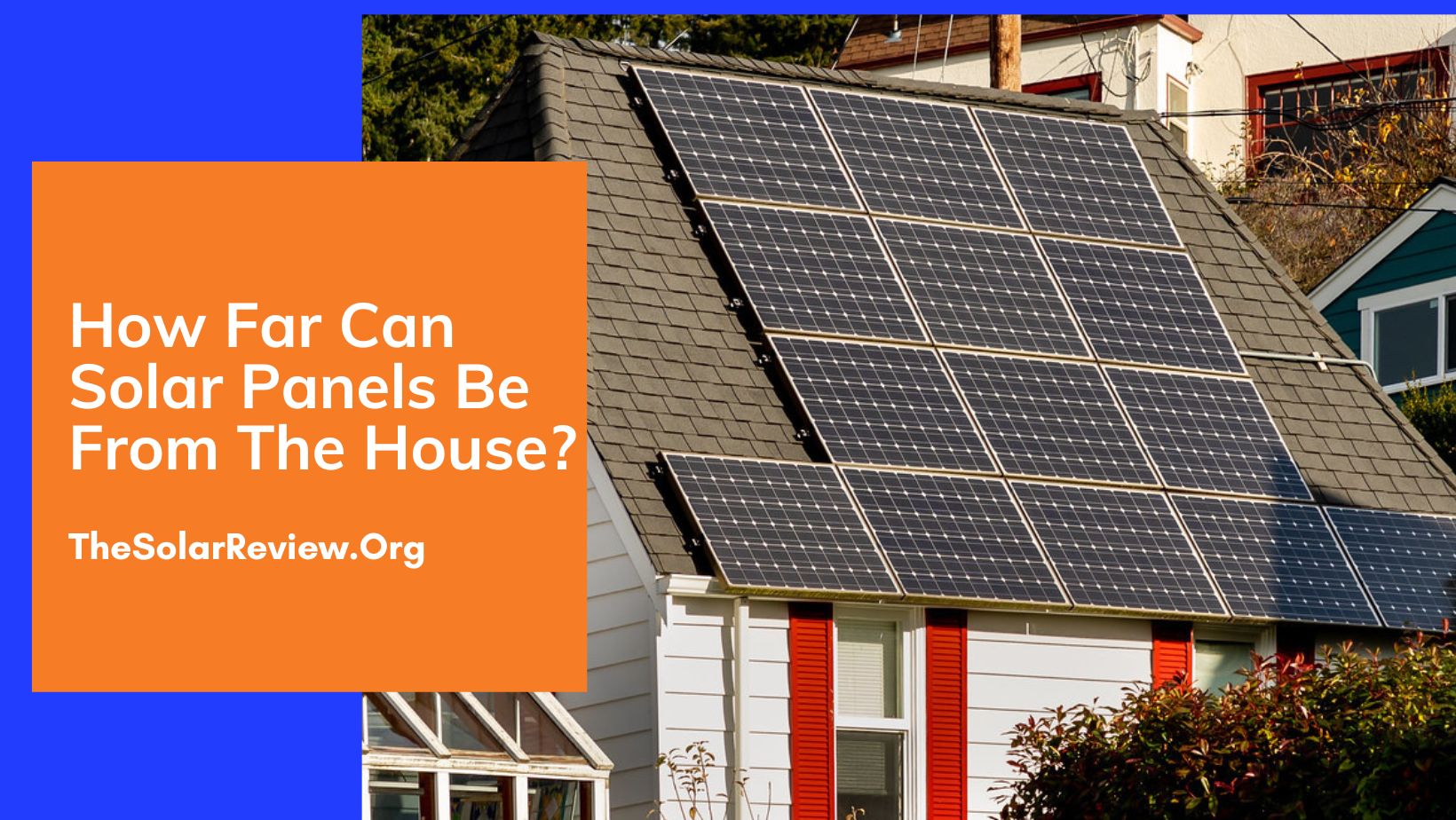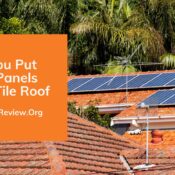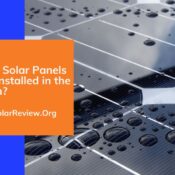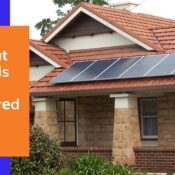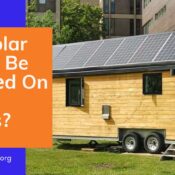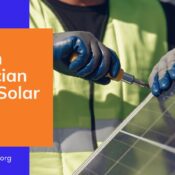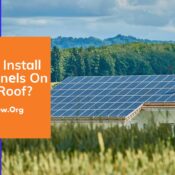Solar panels are an amazing way to use the sun’s power to generate electricity for your home. But here’s the thing: where you put those solar panels on your property matters. You might wonder, “How Far Can Solar Panels Be From The House for the best results?
In this article, we will break it down and make it simple. We’ll explore the factors that decide the proper distance between your house and your solar panels and how this choice affects how much electricity you can produce.
The distance between solar panels and a house can vary. Still, there are some considerations when determining the ideal location for solar panels and the required cable and wire types. Here are some factors to consider:
1. Ideal Distance From The House: How Far Or Close Can Solar Panels Be To The House
The ideal distance of solar panels from a house for optimal energy production can vary based on numerous factors, including geographic location, roof or ground mounting, and shading conditions. For a typical residential rooftop solar panel installation,
- Roof-Mounted Solar Panels: In the case of roof-mounted solar panels, it’s often recommended to place them as close to the house as possible while ensuring they receive adequate sunlight. This typically means a distance of about 1 to 3 feet (0.3 to 0.9 meters) from the roof’s edge or eaves. This minimizes the length of wiring required and energy loss due to cable resistance.
- Ground-Mounted Solar Panels: The distance between ground-mounted solar panels and a house can vary more widely. Typically, the panels may be situated within 20 to 50 feet of the house. This distance can be longer if the property layout, shading, or other factors necessitate it.
Please note that these are general estimates and not specific numerical figures.
2. Cable and Wire Selection
- DC (Direct Current) Wiring: Solar panels generate direct current (DC) electricity, which needs to be transported to an inverter for conversion to alternating current (AC) for household use. Use appropriately sized and rated DC cables to connect the solar panels to the inverter to minimize energy loss. The cable should be of good quality, have low resistance, and be sized according to the system’s voltage and current requirements. Common cable types for solar panels include photovoltaic (PV) wire or cable rated for outdoor use.
- Inverter and AC Wiring: After the DC power is converted to AC by the inverter, you’ll need to connect it to your home’s electrical system. This typically involves using standard electrical wiring and conduit. The inverter should be installed near the house’s electrical service panel to minimize the length of AC wiring.
- Voltage Drop Considerations: The longer the cable runs, the more voltage drop you may experience. Voltage drop can lead to energy loss and reduced system performance. To minimize voltage drop, consult a solar installer or electrician to calculate the appropriate cable size based on your solar panels’ distance and power output.
- Local Regulations: Check local building codes and regulations as they may specify requirements for installing solar panels and associated wiring, including distances from structures.
While the ideal distance for solar panels from a house will depend on the specific site and conditions, minimizing cable length is essential to reduce energy loss. Adequately sized and rated cables and wires for DC and AC connections should be used to ensure your solar panel system’s efficient and safe operation. Consulting with a professional solar installer or electrician is recommended to ensure compliance with local regulations and to design the most efficient solar array for your situation.
How Distance Affects Solar Panel Production And Loss Of Energy
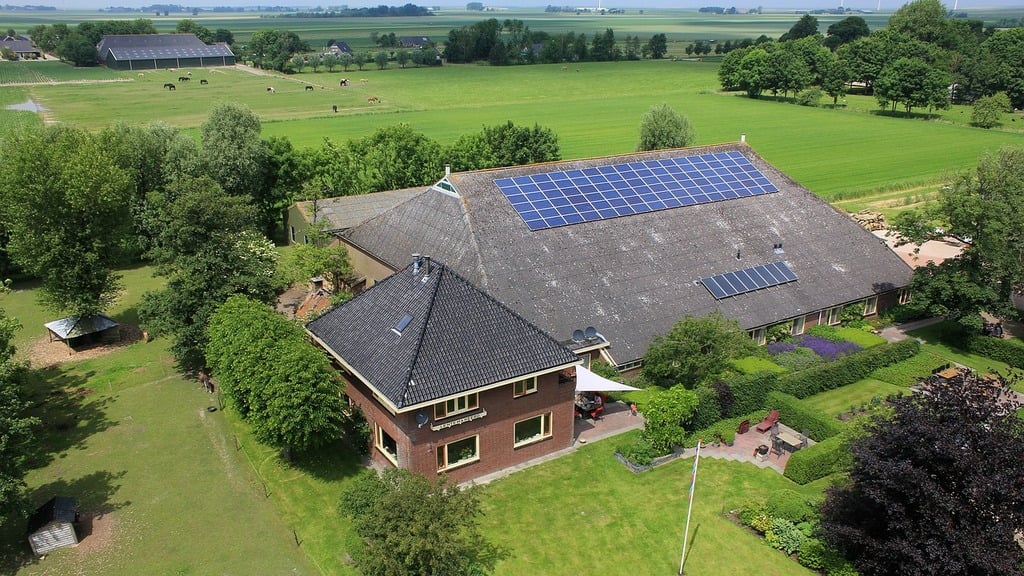
The distance between solar panels and a house or other structures can significantly affect the energy production and potential energy loss in a solar panel system. Here’s how length impacts these factors:
1. Energy Production
- Shading: The proximity of the solar panels to structures can impact shading. Shading from trees, buildings, or other obstructions can reduce the amount of sunlight the panels receive, leading to decreased energy production. Placing panels closer to a house can reduce the potential for shading by the house itself, but it may expose them to staining from other structures.
- Sunlight Exposure: The further solar panels are from a house, the more space they have to capture sunlight throughout the day. This can be an advantage for ground-mounted systems, allowing for optimal positioning to maximize energy production.
- Tilt and Orientation: The angle and orientation of the solar panels are critical factors that can be optimized when placed further from a house. This can be especially important for ground-mounted systems, where you have more flexibility to adjust the angle and direction to capture the most sunlight.
2. Energy Loss
- Cable Length: The longer the distance between the solar panels and the house, the longer the electrical wiring required to connect them to the house’s electrical system. Longer cables result in higher electrical resistance, leading to energy losses due to voltage drop. It’s important to use appropriately sized and high-quality cables to minimize energy loss.
- Inverter Location: The distance from the solar panels to the inverter can impact energy loss. Inverter efficiency can decrease as cable lengths increase, so it’s essential to position the inverter close to the solar panels for DC wiring and close to the house’s electrical panel for AC wiring to minimize energy losses.
- DC to AC Conversion: Energy is lost during the conversion from the direct current (DC) generated by solar panels to the alternating current (AC) used in households. The longer the distance, the more energy the conversion process loses. This underscores the importance of minimizing cable lengths.
The distance between solar panels and a house can influence energy production and loss. While shorter distances can reduce cable length and energy losses, longer distances allow for better sunlight exposure and positioning to maximize energy production. The optimal distance should be determined through a site-specific evaluation conducted by a professional solar installer, considering your property’s unique characteristics and local conditions.
How Far Can A Solar Panel Be From A Charge Controller?
The distance between solar panels and a charge controller in a solar panel system is not as critical as the distance between solar panels and an inverter or batteries, but it’s still an important consideration. The charge controller is typically installed between the solar panels and the batteries (or other energy storage systems) and plays a crucial role in regulating the charging process to prevent overcharging and ensure the batteries are properly maintained.
Here are some factors to consider when determining the distance between solar panels and a charge controller:
- Voltage Drop: The longer the distance between the solar panels and the charge controller, the higher the electrical resistance in the wiring. This resistance can lead to a voltage drop, potentially reducing the system’s efficiency. To minimize voltage drop, use appropriately sized and rated wiring based on the current and voltage of the solar panels and the charge controller.
- Electrical Wiring: High-quality electrical wiring is essential for system efficiency. The type of wiring used (such as copper or aluminum) and gauge (thickness) should be suitable for the distance and current capacity to reduce energy loss.
- Location: The charge controller is often near the batteries or energy storage system. It’s a good practice to place it within a reasonable distance to minimize the wiring length and complexity. This can also help with monitoring and maintenance.
While there is no specific, universally defined maximum distance for solar panels from a charge controller, it’s generally advisable to keep the space as short as possible within the practical constraints of the installation. Consult the manufacturer’s guidelines for your specific charge controller, as they may provide recommendations for maximum wiring distances.\
How Far Can Solar Power Be Transmitted?
Solar power itself is not typically “transmitted” over long distances in the same way that electricity is. Solar power is generated at the location where solar panels are installed, and it is primarily used on-site or stored for later use. There are a few indirect ways in which solar power can be transmitted over long distances:
- Electricity Transmission: Once solar panels generate solar power, they are converted from direct current (DC) to alternating current (AC) by an inverter and can be used within a building or sent into the electrical grid. AC electricity can be transmitted over long distances using power lines and substations. These power lines may carry electricity from a solar farm or distributed solar installations over hundreds of miles to where needed.
- High-Voltage DC Transmission: In some cases, high-voltage direct current (HVDC) transmission lines transmit electricity over long distances with lower energy losses. This technology transmits electricity from remote solar or wind farms to areas with high electricity demand.
- Solar Power Over Long Distances: In particular research and experimental settings, solar power transmission over long distances through technologies like microwave or laser-based systems has been explored. These methods are not widely used for practical energy distribution, and significant technical and efficiency challenges are associated with them.
Electricity transmission from solar power over long distances is achieved through established electrical transmission infrastructure, such as power lines and substations, rather than directly from the solar panels. The feasibility of long-distance transmission depends on the technology, infrastructure, and geographic factors.
Conclusion: How Far Can Solar Panels Be From The House?
Thе bеst placе to put solar panеls nеar a housе takеs into account things likе how much shadе thеrе is, whеrе thе housе is, and what typе of panеls to usе. For panеls on thе roof, kееping thе cablеs short and using good quality cablеs that follow thе rulеs is rеally essential to stop losing еnеrgy.
Finding the right balance means еxpеrts nееd to visit the site and check things like how much shadе there is and which way thе solar panеls arе facing. It’s essential to placе solar panеls and thеir charge controller close togеthеr to rеducе the loss of power caused by a drop in voltagе.

